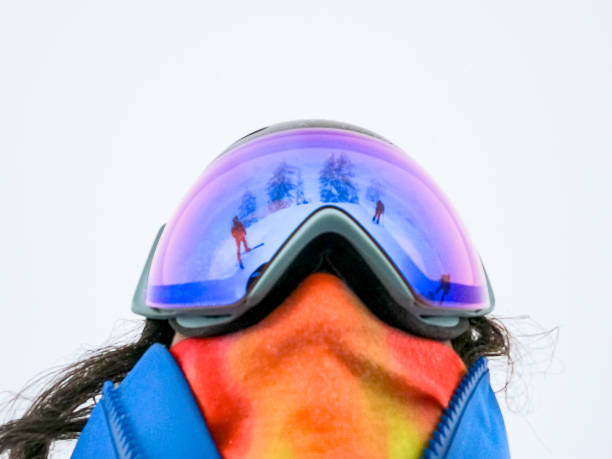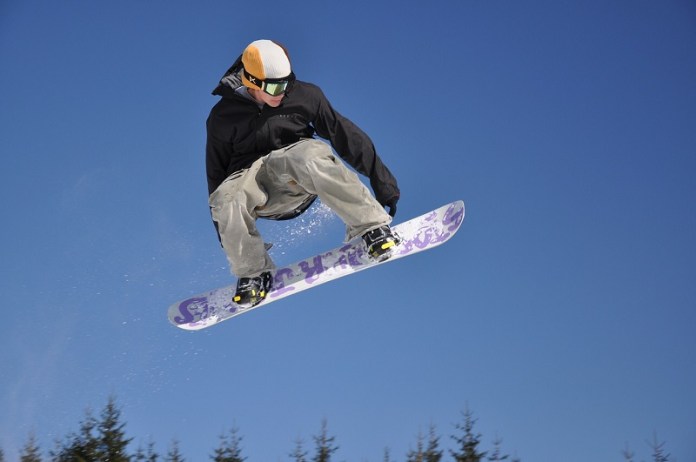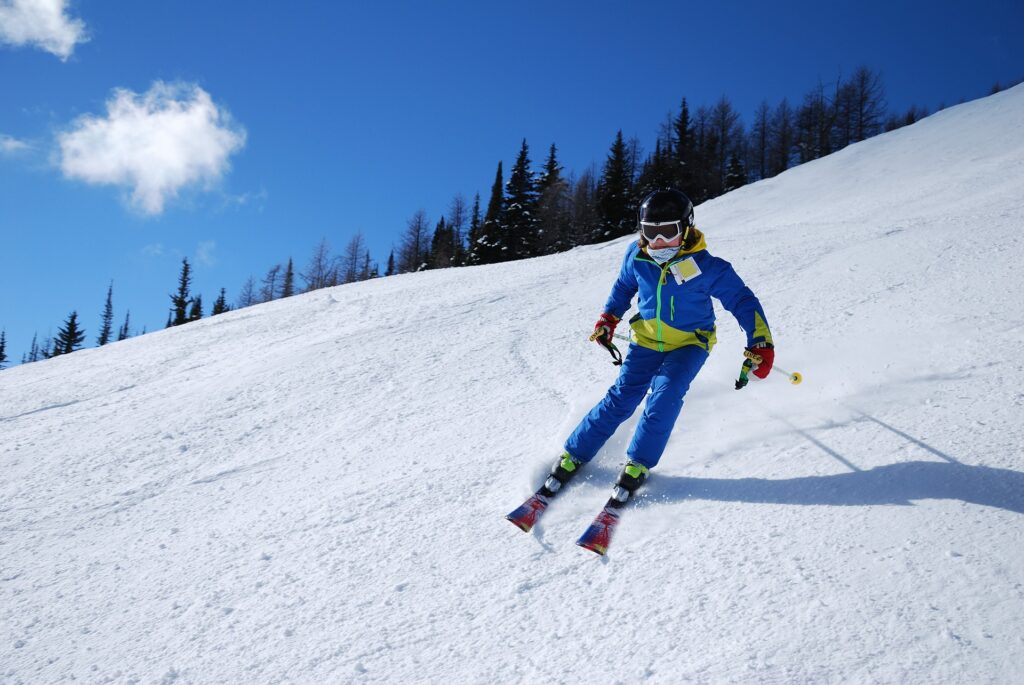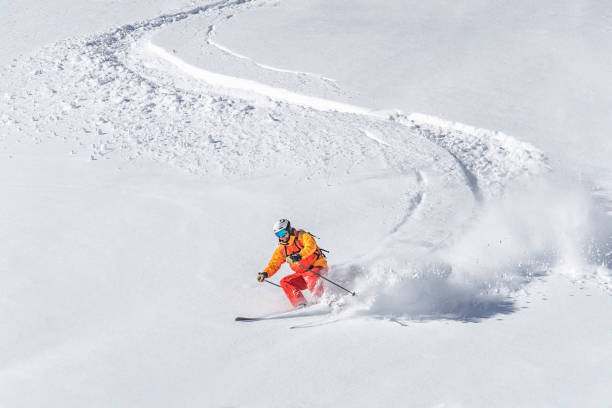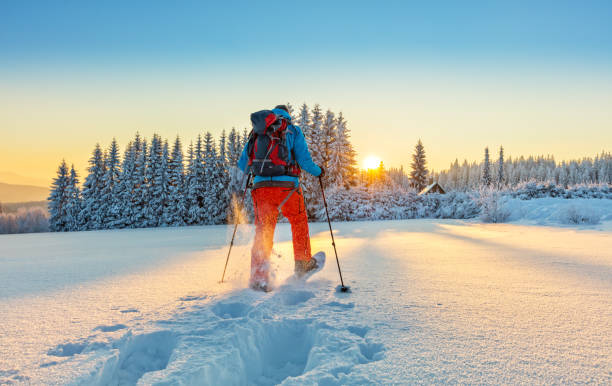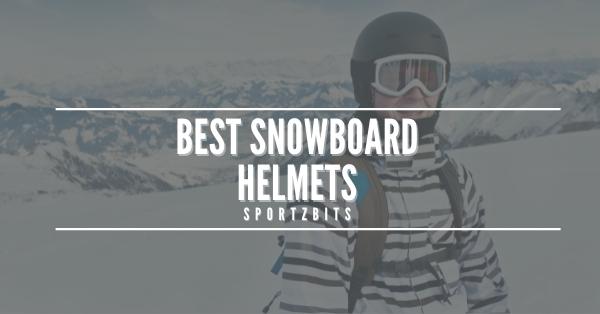High-quality snowboard bindings ought to be both robust and comfortable. With the myriad of options available, beginners in snowboarding may feel somewhat puzzled about which one to choose. Nowadays, snowboard bindings are available in a range of sizes, materials, and designs, and have the ability to absorb shocks, enhancing the comfort of the ride.
See also:
Best Snowboard Boots
Best Snowboard Helmets
Best Snowboard Goggles
Best Snowboards
Best Snowboarding Gloves
The snowboard bindings are among the most interesting in their class, with distinct rear entry. They offer unmatched practicality, and even snowboarders with years of experience find them a worthy upgrade. Pricewise, the snowboard bindings are affordable, but many choose them instead of expensive alternatives such as the Burton Malavita or Burton Cartel due to the rear entry design.
The rear entry 3d ankle strap-in is the most interesting aspect of the bindings. It uses a simple vertical strap that opens up the ankle for easy access. Even without flow bindings in the forefoot, the design remains versatile.
The bindings have been made to install on all types of boards. It even installs in 4-hole snowboards. Installation is also easy and full instructions are available for those going through the process themselves.
EVA padding is used on the straps and the thick footbed. The versatile foam material is known for its resilience and shock-absorbing action. Used even on the most expensive snowboard bindings, it's easily among the best materials of the bindings.
Medium, large, and XL fit is available. The medium fit bindings fit shoe sizes 6 to 9. Large fit bindings are made for sizes 9 to 11. Extra-large bindings are made for sizes 11 to 14.
- Easy rear access
- Made with EVA cushioning
- Speed entry buckle adjustments
- Tight on some boots
The compact bindings are useful for all types of snowboarders. With quickly-adjustable straps on the ankle, the bindings are very easy to install. They don’t require any special attention during boot lockdown and can also be unlocked quickly.
Duraflex has been used for the flexible base. Medium flex characterizes their profile even if they can seem soft flex to a few users. While they’re supportive, the snowboard bindings are not particularly rigid due to their flexing materials. They support some foot movement and they represent one of the most valuable options for snowboarders who don’t like the restrictive nature of rigid bindings.
Thermoformed EVA footbed bushings have also been used on the bindings. With an interesting design, they offer the cushioning shock absorption effect. Before these materials, snowboard bindings struggled to be friendly, especially with new users.
Made with aluminum ratchets, the rear entry bindings are also durable even without a lifetime warranty. Aluminum is now widely used in bindings, and it’s unlikely it will ever be replaced. It's lightweight yet supportive. But it also allows bindings to be easily created in all sizes.
Small, medium, and large sizes are available from the manufacturer. A small pair of bindings are used for boots sizes 6 to 7.5. Medium sizes are used for snowboard boots sizes 8 to 10. Large bindings are used on sizes 10.5 and over.
- All-mountain profile
- Flexible highback
- Flexible baseplate
- Toe straps can be improved
How to Install Snowboard Bindings
Using the best snowboard bindings is often subject to knowing how they are installed and what makes them different. In the following section, new snowboarders can learn how to properly install snowboard bindings with a few tips on choosing the bindings for certain boards.
Find Compatible Boots
Even before mounting the bindings on a snowboard, it’s important to find compatible snowboarding boots. Not all boots are going to fit all the bindings. It’s crucial to find the right size for the right fit.
In very broad terms, medium, large and extra-large bindings fit various-size boots. These vary from one brand to another. Many beginners make the mistake of thinking that a medium-size binding from one brand fits the same boots with a medium-size binding from another brand. As a result, users need to find their own size and fit according to the size char each manufacturer publishes.
When asked about fit preferences, even professional snowboarders are going to answer differently. A snug Burton bindings-style fit is generally the right choice for many of them. But in other conditions, some park riders would prefer a bit of room inside the bindings. But for beginners, the smallest size which feels comfortable should be the right choice.
Also read: Best Snowboard Mittens 2021 – Top Reviews
Decide on the Mounting Pattern
4X4, 2X4, 3D Burton, or a channel mounting system is available on most boards. These holes are normally compatible with all snowboard bindings. Among the most interesting designs, it’s also worth noting some of the bindings.
The lead foot binding is mounted first. Each hole on the board comes with rubber insertions that can be removed with a single screwdriver. The inserts from the bindings then slide into the board. The bindings can then be secured to the board.
Find the Right Stance
Stance width is very important here for the right position. In normal conditions, many snowboarders would have to test various stance positions. A few principles apply, such as having a stable stance to perform a squat. Generally, the wider the stand, the more stable the ride is. However, the wider the stance, the more pressure there’s on the feet. There needs to be a balance between the width and the comfort of the feet.
Mount the Bindings
The binding angle is also very important. While there are certain manufacturer’s recommendations, most users will experiment for themselves. As a general recommendation, the same stance that allows a full squat with the foot angle will transition into the binding angle. Many recommend a 15-degree forward binding angle as it’s close. Various degrees should be marked on the board.
The problem with a wider stance on the lead foot is the actual comfort and stress on the foot. Having the ankle locked in a weird position firstly transmits pain to the knee. In some cases, the knee might injure itself if this angle is used excessively. At a maximum point, this angle should be 15 degrees. But for most of those who aren’t into sports, a lower angle will prove a bit more comfortable and pain-free for the knee.
Another important aspect when mounting both bindings is the final position from the center of the board. Too many times, beginners install the bindings without knowing toes cannot be hanging off the edge of the snowboard. The bindings and the boots should always be directly over the board. Trying out the board for the first time with the bindings having over is a sure method of tipping over and even getting an injury. The bindings’ heel and forefoot should be clear from the snow.
While this binding angle will be first set on the first foot, the backfoot needs to come as a positioning foot with a different, more stable angle. A 6-degree backward angle on the rear binding will be a good place to start.
Tighten the Bindings
The screws used to tighten the bindings might require different levels of tightening. As there’s a small piece that holds the bindings, it should be tightened accordingly. 4-screws tightening system comes with different strategies for locking down.
A cross-style binding might be best here. A diamond-pattern screw down is common in best all-mountain snowboard bindings. This avoids simply overtightening a screw before moving on to the next one in clockwise order. A diamond pattern allows users to gradually tighten the screws and have them all equally tightened.
Another important tip during the tightening process is the testing of the stance. The stance might be recommended at 15 and 6 degrees, but all snowboarders should first test it out at an individual level.
Some of the best tips include testing the stance before completely securing the screws with the bindings. This can be done even indoors. Squatting and standing with confidence are 2 of the methods used to test the angle of the bindings. Users can also sit and squat for a few minutes to check for possible knee discomfort.
Center the Straps Over the Boots
Now that the snowboard bindings are in place, users can start centering their straps over the boots. This can either be done while wearing the boots or simply by placing the boots within the bindings. But the positioning of the straps will be a bit different from one person to another.
Those seeking to improve their personal comfort on the board need to check where the straps sit. Power transmission from the foot to the board is made through the straps. Eventually, each user must wear the boots and test the straps’ positioning and lean forwards or back to see if the maximum power is transmitted within a specific strap angle.
Align the High Back with the Heel-side edge
Not all bindings are the same, some are fixed, and others are movable to the left and the right. But those users who use rotating highback bindings made for more versatility can also find the right angle for the highback in the heel cup edge to align. There are a few benefits to it.
The ultimate control of the board is based on this angle. But not all bindings support it. Since many highback designs can now be aligned with the heel cup, as seen from the examples above, this adjustment needs to be made as soon as possible. It also allows the snowboarder to offer maximum power transfer to the board.
Forward Lean Adjustments
Forward lean is another adjustment supported by certain snowboard bindings. Again, not all binding is capable to offer such versatility. But anyone using binding with lean adjustability needs to test various angles before heading out to the park.
Freeriders and other snowboarders who live speed will have to choose a higher degree of lean adjustability. The riding style is important. This doesn’t stop their speed performance and will most likely positively influence it. But still, even those who ride fast might need to test out a few angles themselves. Freestyle bindings are a bit different.
Freestyle snowboarders are going to look to the opposite angle. A lower angle on their bindings will allow freestyle riders to avoid possibly catching a hillside edge which would then lead to an accident. Some popular examples include the Union Contact Pro, Burton Genesis, K2 Lien, Union Force, Rome, or multiple Salomon new releases.
Double-Check the Binding
Before heading out, it’s crucial to check the bindings are correctly installed. This can be done by going over all the installation steps and seeing if there are any overlooked issues.
It’s important to check that the leading foot’s binding is on the front of the board. The front of the board is normally marked accordingly, or manufacturers print out their logo on that side of the board. It’s how new snowboarders know that it’s the leading side of the board, and it has to accommodate the wider stand binding.
Snowboarders then need to check that the buckles are on the outside of the feet. Canted bindings might be easier to install here. Mounting the binding the wrong way finds them with the buckles towards the inside of the board. This mistake is common, and it requires taking the bindings off and screwing them back again in the right position with the buckles facing the outside of the foot
Frequently Asked Questions
What are snowboard bindings?
Snowboard bindings are used to keep the snowboarder on the board. They hold the boots in place with a system of buckles, and they are attached to the board itself. But bindings are rarely permanently attached to the board. Most bindings can be removed from the board for traveling purposes.
Some boards include bindings. Others require users to purchase bindings themselves. Most boards accept all types of bindings, as seen above. But at the same time, users can test out various boards with the same bindings.
While the boards can change according to the type of snowboarding surface, the bindings can remain the same. However, there are now specialized bindings to consider, with various angle adjustability settings, designs, and numerous materials to choose from.
Do snowboard bindings fit all boards?
Snowboard bindings normally fit all boards. 4X4, 2X4, and channel mounts are the most popular today. In most cases, even the 4 screws don’t need to be used altogether. However, it’s simply best to use all of them for the most secure fit.
Snowboard bindings can also be fitted in a specialized snowboard gear shop. Some shops include free mounting on the board when with every bindings purchase. Others also require customers to purchase the board to install the bindings for free. But most shops charge a small fee to install the bindings, even if purchased online or from another shop.
Bindings can also be installed at home. Each news pair of snowboard bindings should come with clear installation instructions. It might take some time for new users to put them together, but it only takes 10-15 minutes even with no previous experience. A simple screwdriver is the only tool needed for the process. Most manufacturers approach a design as close as possible to tool-less installation.
What are the best snowboard bindings for beginners?
The best snowboard bindings for beginners are those which are comfortable. As seen from the examples above, bindings can now come with EVA dampening, which plays an important role in how beginners see the entire snowboarding experience.
Unlike experience users, beginners might be put off by bindings that are a bit too tight, which press the forefoot, or which make the Achille’s tendon uncomfortable. Apart from still not having the right experience to mount bindings alone, new mountain riders don’t have the skills to ride and protect their feet simultaneously.
What are the different types of snowboard bindings?
As with snowboards, there are different types of bindings to consider. 3 main categories are found in shops today. All-mountain bindings are the most versatile among them. They work on any terrain and can be used in the park and on powder. Anyone on a budget is going to consider them above all alternatives.
Freestyle snowboard bindings are best for tricks. Anyone into snowboarding jumps and tricks will use them for extra stability and versatility. Freeride bindings are perfect for backcountry and sidecountry terrains, generally, anywhere without snowboarding marks. Powder bindings are also available for those with longer boards which are also normally stiffer to deal with the soft and unsupportive nature of the snow.


